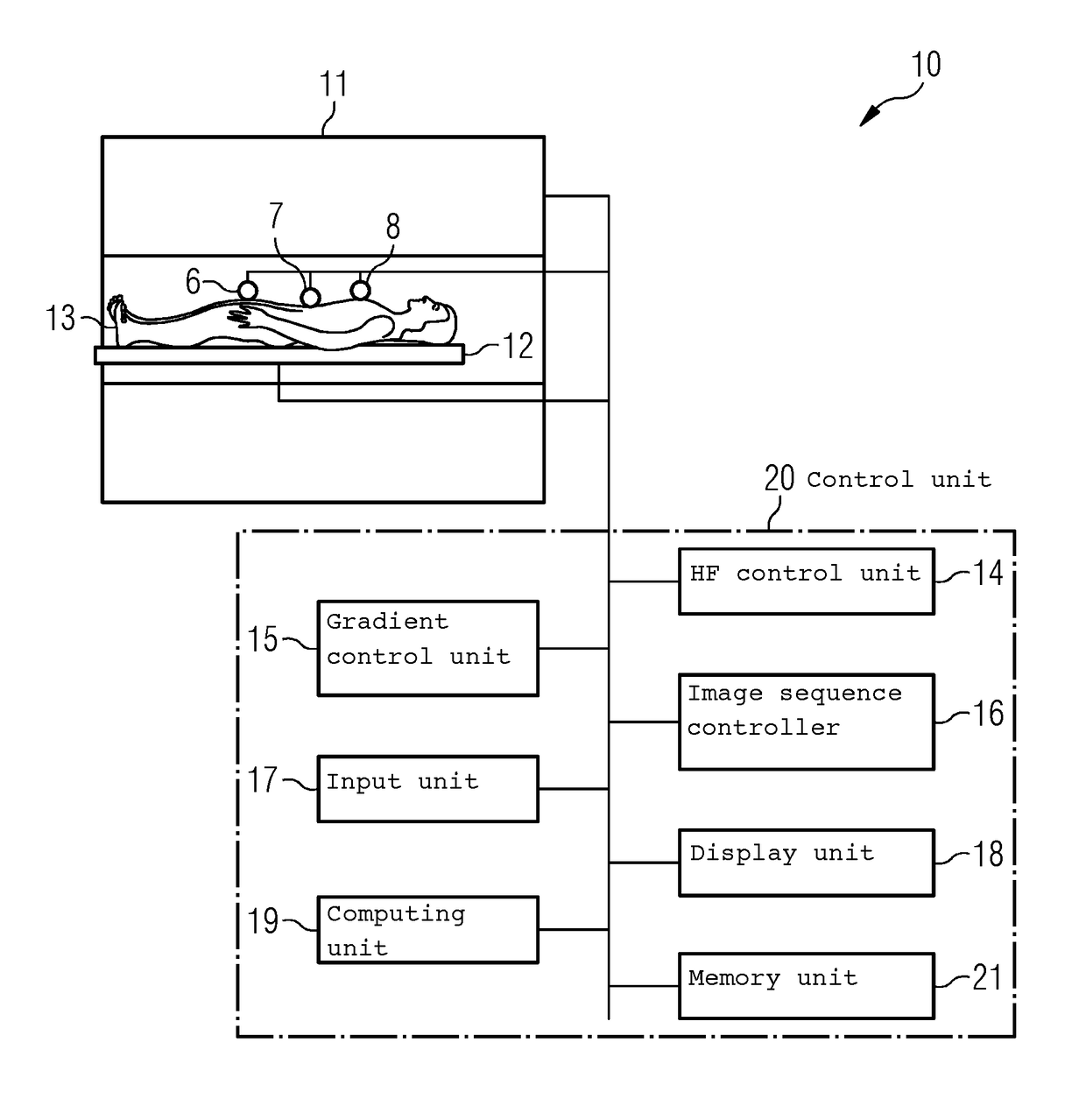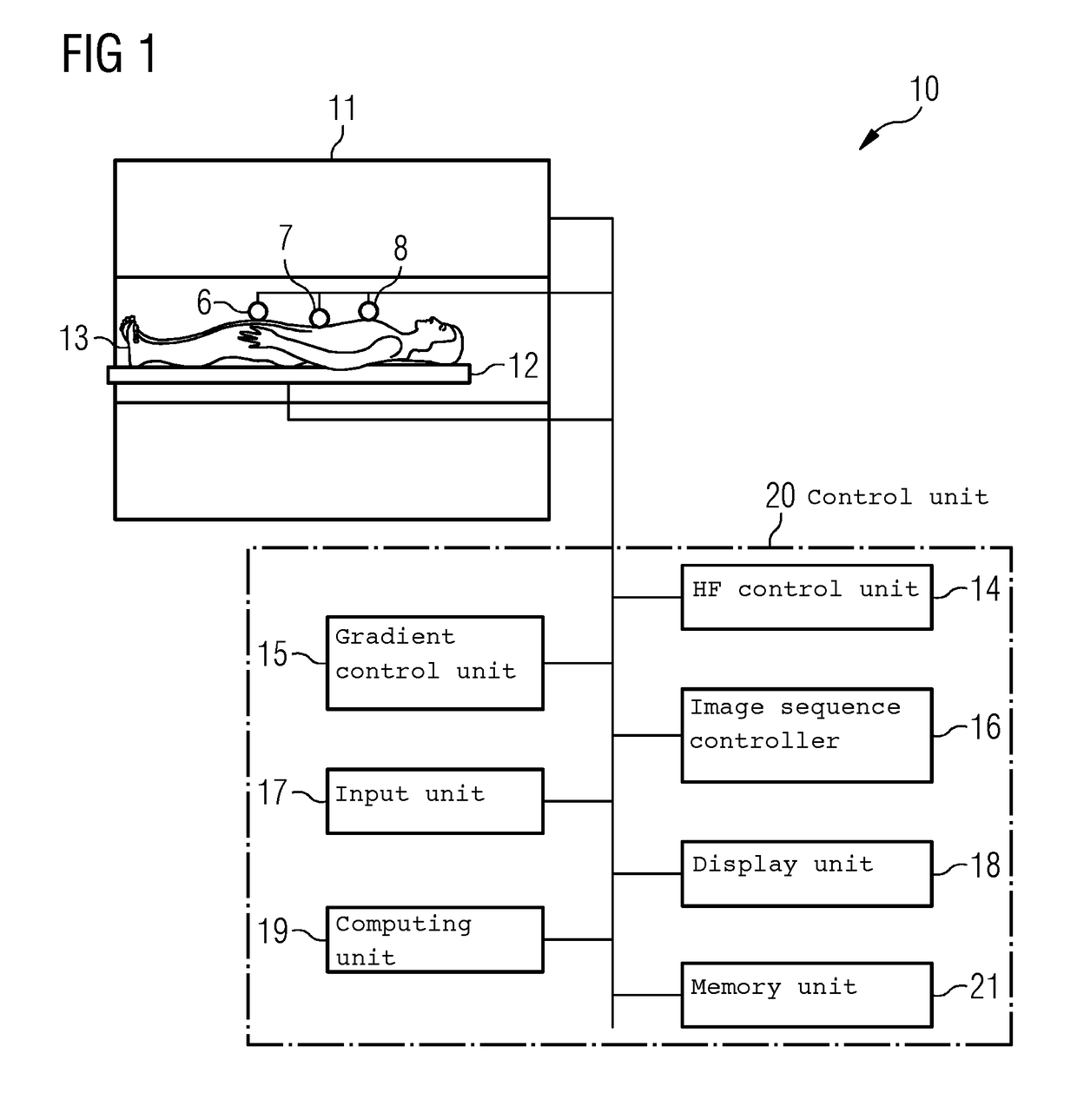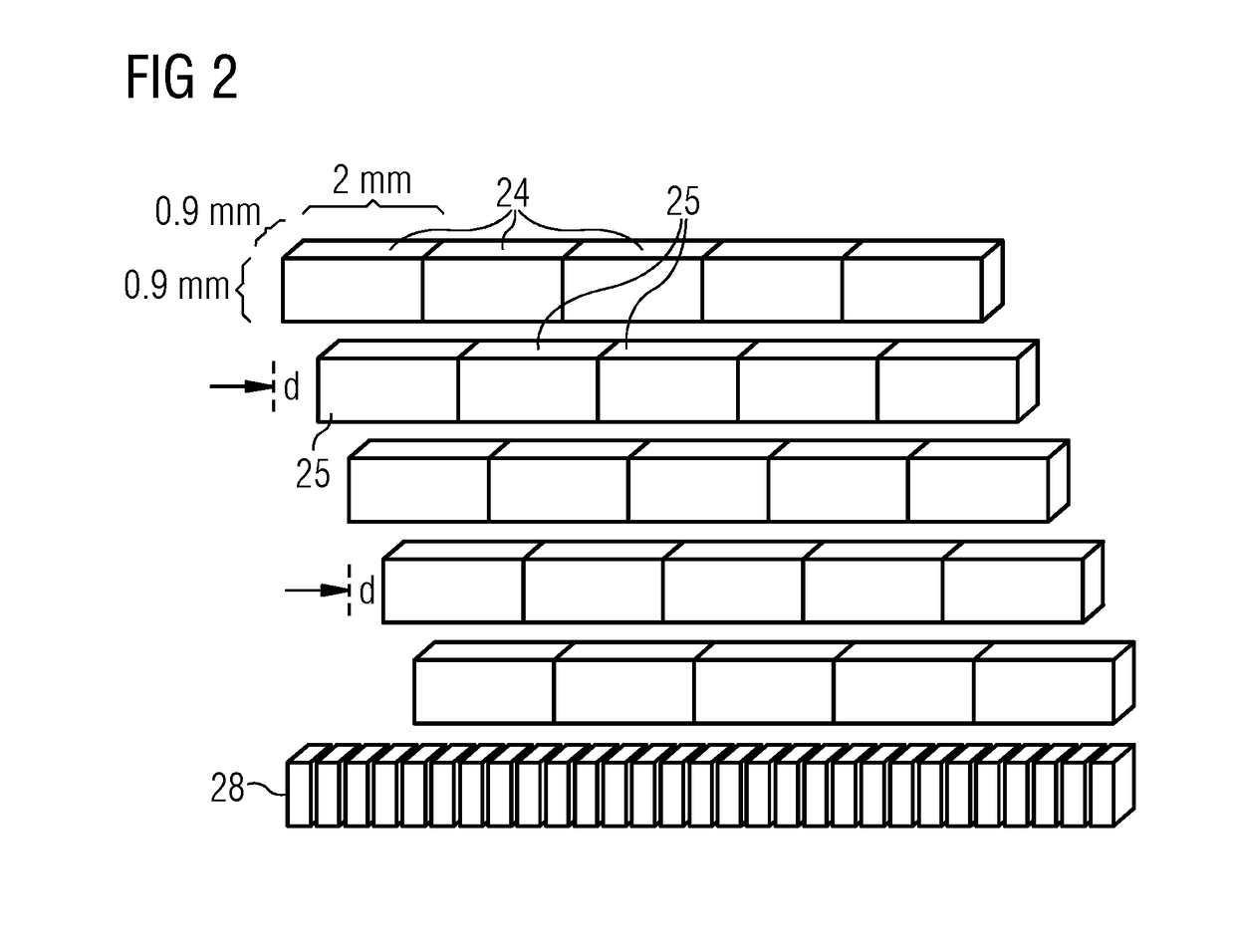Iterative reconstruction of quantitative magnetic resonance images
a quantitative magnetic resonance and image technology, applied in the direction of image generation, measurement using nmr, instruments, etc., can solve the problems of long measurement time, rare routine use, and time-consuming in order to achieve the effect of generating quantitative mr images
- Summary
- Abstract
- Description
- Claims
- Application Information
AI Technical Summary
Benefits of technology
Problems solved by technology
Method used
Image
Examples
Embodiment Construction
[0034]The present disclosure is described in greater detail below on the basis of certain embodiments with reference to the appended drawings. Identical or similar elements are labeled with the same reference signs in the drawings. The figures are furthermore schematic diagrams of various embodiments of the disclosure. The elements illustrated in the figures are not necessarily shown true to scale but are instead reproduced in such a way that their function and purpose are comprehensible to a person skilled in the art. The connections between functional units and other elements shown in the figures may also be implemented as indirect connections with the connection being wireless or wired. Functional units may be implemented as hardware, software, or a combination of hardware and software.
[0035]FIG. 1 illustrates an MR system 10 with which, as is explained below, quantitative MR images may be captured with good spatial resolution in all dimensions and within a satisfactory capture d...
PUM
 Login to View More
Login to View More Abstract
Description
Claims
Application Information
 Login to View More
Login to View More - R&D
- Intellectual Property
- Life Sciences
- Materials
- Tech Scout
- Unparalleled Data Quality
- Higher Quality Content
- 60% Fewer Hallucinations
Browse by: Latest US Patents, China's latest patents, Technical Efficacy Thesaurus, Application Domain, Technology Topic, Popular Technical Reports.
© 2025 PatSnap. All rights reserved.Legal|Privacy policy|Modern Slavery Act Transparency Statement|Sitemap|About US| Contact US: help@patsnap.com



